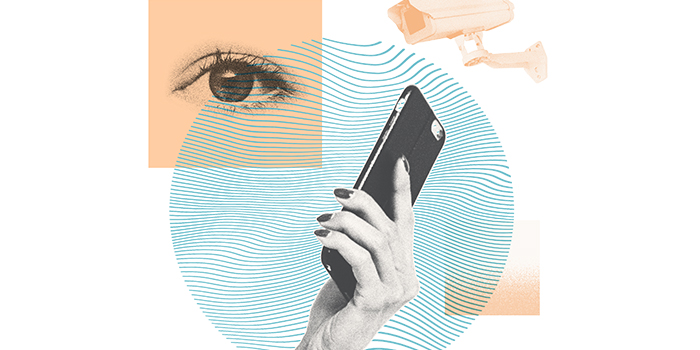Biometrics
The ACLU works in courts, legislatures, and communities to defend and preserve the individual rights and liberties that the Constitution and the laws of the United States guarantee everyone in this country.

The Latest
-


ACLU Comment on Newly Released FTC Policy Statement on Biometrics
-


In Big Win, Settlement Ensures Clearview AI Complies With Groundbreaking Illinois Biometric Privacy Law
-

Three Key Problems with the Government's Use of a Flawed Facial Recognition Service
-


Illinois Court Rejects Clearview’s Attempt to Halt Lawsuit Against Privacy-Destroying Surveillance
Explore More
What's at Stake
A biometric is a way to identify someone based on physical characteristics: fingerprints, DNA, retinas, voice, face, or even gait, among others. These simple measurements add up to an extraordinary threat to privacy when they are collected, analyzed, and stored in readily searchable databases.
Every day, federal, state, and local law enforcement authorities add new data to the vast and growing databases of Americans’ biometrics. The FBI, for its part, calls its biometrics database the Next Generation Identification System, and the goal is clear: to allow every police officer in the country to be able to instantaneously identify any individual in their crosshairs.
One of the many privacy intrusions inherent in that goal is the end of anonymity as we know it. As law enforcement authorities continue to add to the network of cameras monitoring our public spaces, it will become increasingly difficult to evade their watchful eye and, soon enough, their automated biometric identification.
The biometric threat is not limited to government; corporations are joining the fray, too. Popular social media sites have been building and testing facial recognition databases for years. There is little public explanation of the ways in which those biometric datasets are being used, aggregated, and potentially sold.
The ACLU has been tracking the development of biometric identification for many years, urging caution in its deployment and stringent safeguards in its use.
A biometric is a way to identify someone based on physical characteristics: fingerprints, DNA, retinas, voice, face, or even gait, among others. These simple measurements add up to an extraordinary threat to privacy when they are collected, analyzed, and stored in readily searchable databases.
Every day, federal, state, and local law enforcement authorities add new data to the vast and growing databases of Americans’ biometrics. The FBI, for its part, calls its biometrics database the Next Generation Identification System, and the goal is clear: to allow every police officer in the country to be able to instantaneously identify any individual in their crosshairs.
One of the many privacy intrusions inherent in that goal is the end of anonymity as we know it. As law enforcement authorities continue to add to the network of cameras monitoring our public spaces, it will become increasingly difficult to evade their watchful eye and, soon enough, their automated biometric identification.
The biometric threat is not limited to government; corporations are joining the fray, too. Popular social media sites have been building and testing facial recognition databases for years. There is little public explanation of the ways in which those biometric datasets are being used, aggregated, and potentially sold.
The ACLU has been tracking the development of biometric identification for many years, urging caution in its deployment and stringent safeguards in its use.